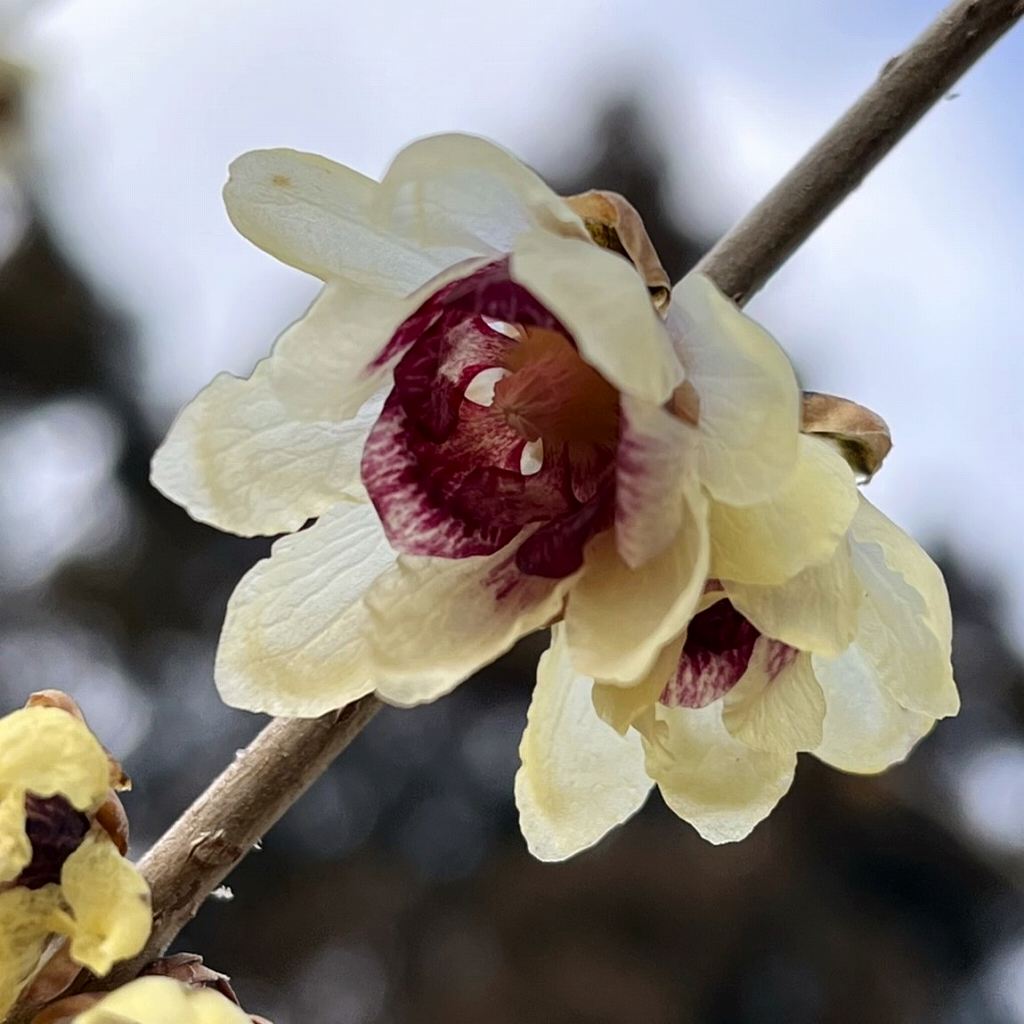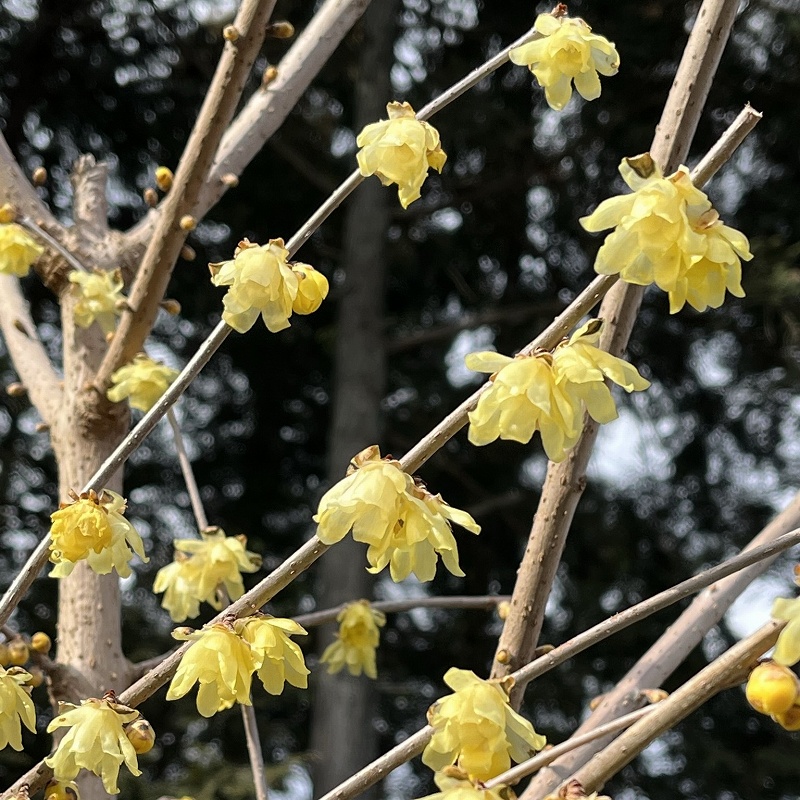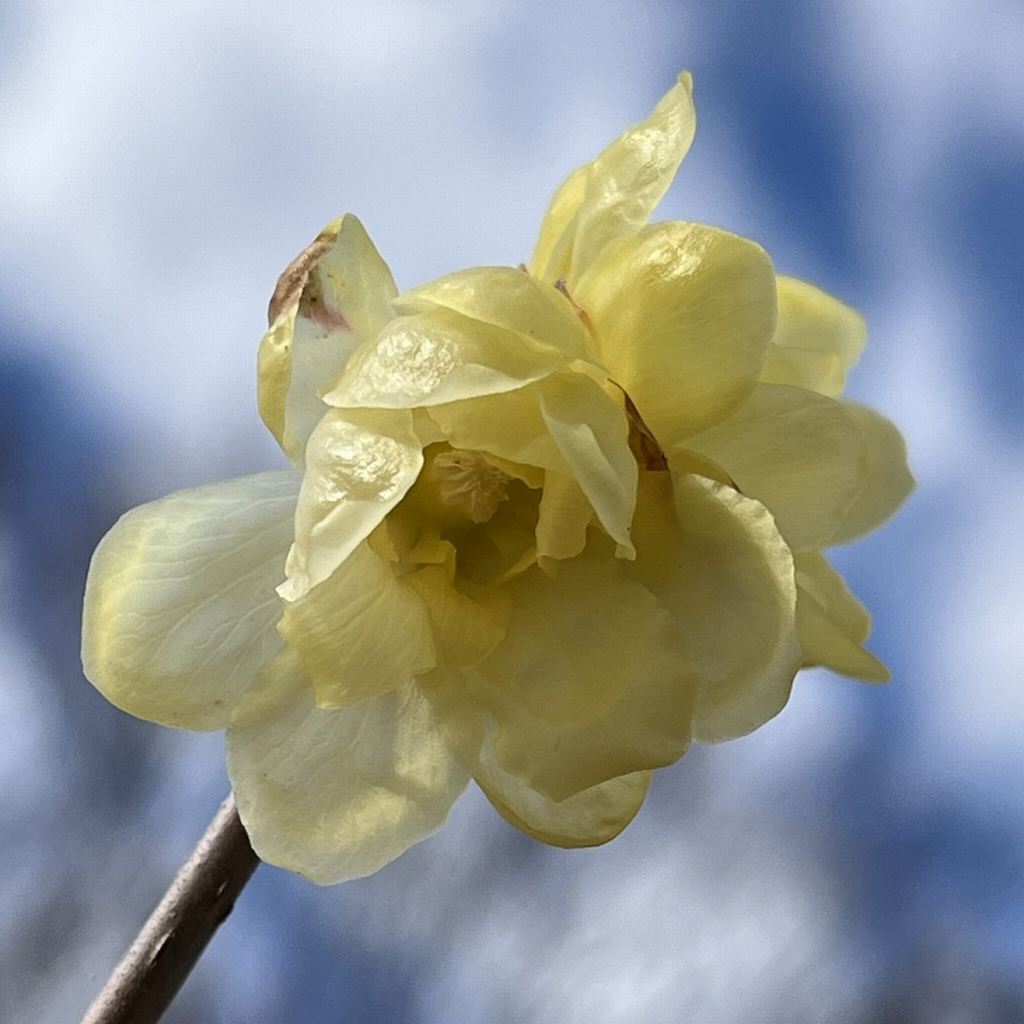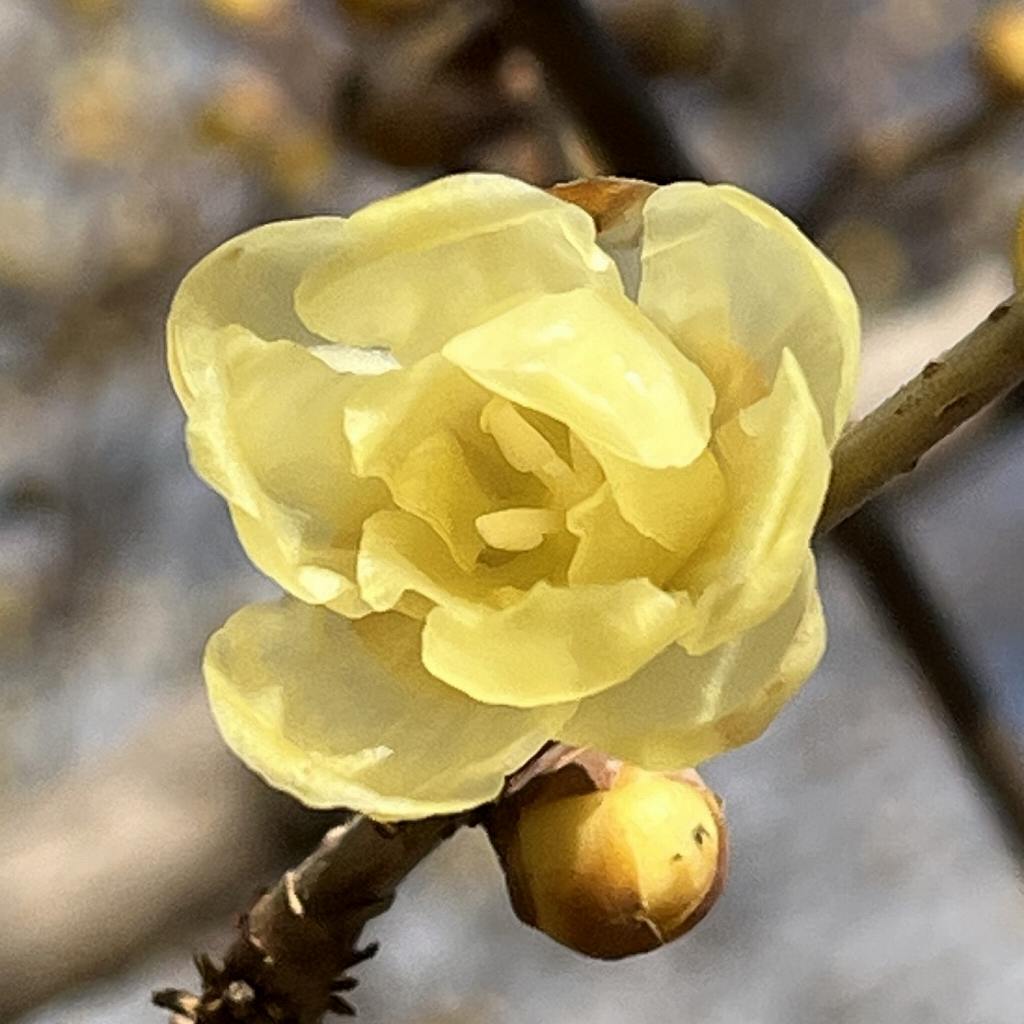ロウバイは、花被片が螺旋状に重なり、外側が黄白色、内側が赤紫色。一方、ソシンロウバイは花が大きく、香りが強く、内側も黄白色です。
Winter Sweet has spirally overlapping perianths that are yellowish white on the outside and reddish purple on the inside. On the other hand, Concolor, a cultivar of Winter Sweet, has larger flowers, stronger fragrance, and yellowish-white inner tepals.
【仮名】ロウバイ, ソシンロウバイ
【和名】蝋梅, 臘梅, 素心蝋梅
【英名】Winter Sweet, Japanese Allspice
【学名】Chimonanthus praecox
【誕生】01/ 02, 01/ 21, 12/ 30
【開花】01, 02, 12月
【花色】White, Purple, Yellow
ロウバイ
ロウバイの来歴

ロウバイはロウバイ科の落葉低木。原産地は中国で、日本へは江戸時代の初期に渡来し、「唐梅」とも呼ばれました。梅、山茶花、水仙とともに「雪中四友」の1つ。花の少ない厳冬期に、花が美しく香るので「慈しみ」、花が俯いて咲くので「奥ゆかしさ」などの花言葉があります。
ロウバイの名前

ロウバイの名前の由来は漢名「蝋梅」「臘梅」で、「蝋細工」のような花を陰暦の12月「臘月」に咲かせ、形と香りが「梅」に似ているから。英名ウインタースイートは「冬の甘い香り」、ラテン語の属名チモナンサスは「冬の花」、種名プラエコクスは「早咲きの」という意味です。
ロウバイの姿形

ロウバイの葉は長楕円形で先が尖り、表面がザラザラ。花は多くの花被片が螺旋状に重なり、外側が黄白色、内側が赤紫色です。一方、普及品種の「素心蝋梅」は花が大きく、香りが強く、花被片の内側も黄白色。花後は壺のような紡錘形の偽果を結び、中に痩果が収められています。
ロウバイの品種

ロウバイには多くの品種があります。素心蝋梅の改良種で花が早く咲き、花被片が濃黄色で丸い「満月蝋梅」、花が大きく、内側の花被片が赤紫色の「唐蝋梅」、蝋梅と唐蝋梅の中間種「狗牙蝋梅」など。一方、原産地が北米東部で、初夏に黒紫色の花が咲く「黒花蝋梅」は別属です。
ロウバイの利用

ロウバイは寒さに強く、生育が早くて丈夫。挿し木だけでなく実生でも殖やせます。ただし、花が落ちやすいので扱うときは丁寧に。中国では蕾や花から抽出した「蝋梅油」が火傷に用いられますが、毒性のあるアルカロイドのカリカンチンが種子などに含まれるので注意が必要です。
Winter Sweet

Winter Sweet is a deciduous shrub of Calycanthaceae family. Originating in China, it was introduced to Japan in the early Edo period and was also called “Chinese plum”. One of the “four flowers in the snow” along with Plum, Sasanqua, and Narcissus. There are flower languages such as “compassion” because the flowers are beautifully fragrant in the midwinter where few flowers are, and “depression” because the flowers bloom downward.
The Japanese name of Winter Sweet, “Wax Plum”, is derived from the Chinese name. Because it blooms like “Wax work”, and its shape and scent are similar to “Plum”. The English name means “sweet scent of winter”, the Latin genus name Chimonanthus means “winter flower”, and the species name Praecox means “early blooming”.
The leaves of Winter Sweet are oblong with pointed tips and rough surfaces. The flower has many petals spirally overlapping, yellowish white on the outside and reddish purple on the inside. On the other hand, the popular cultivar “Concolor” has large flowers, a strong scent, and the inside of the perianth is yellowish white. After flowering, it bears a pot-like spindle-shaped false fruit, which contains an achene.
There are many varieties of Winter Sweet. “Mangetsu”, an improved variety of Concolor, which blooms early and has dark yellow round tepals, “Grandiflorus” has large flowers and reddish-purple inner tepals, “Intermedius” is an intermediate species between Winter Sweet and Grandiflorus. On the other hand, “Glaucus” is a different genus Calycanthus floridus, which is native to the eastern part of North America and has dark purple flowers that bloom in early summer.
Winter Sweet is resistant to cold, grows quickly and is hardy. It can be propagated not only by cuttings but also by seedlings. However, the flowers fall off easily, so be careful when handling them. In China, “winter sweet oil” extracted from buds and flowers is used for burns, but care must be taken as the seeds contain the toxic alkaloid caricanthin.



